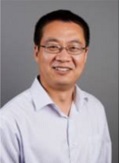题目: How to produce a turbo equalization system with
Complexity O(logL)?
时间: 2013年4月5日(周五)上午10:30-12:00
地点: 信电大楼-215学术厅
报告人:Prof Defeng (David) Huang (The University of Western Australia)
Short biography:
Defeng(David) Huang received the B.E.E.E. and M.E.E.E. degree in electronic engineering from Tsinghua University in 1996 and 1999, respectively, and the PhD degree in electrical and electronic engineering from the Hong Kong University of Science and Technology (HKUST) in 2004. He joined the School of Electrical, Electronic and Computer Engineering at the University of Western Australia (UWA) in 2005 as a lecturer, and currently he is a professor. Before joining UWA, he was a lecturer at Tsinghua University.
Dr. Huang served as an editor for the IEEE transactions on Wireless Communications from 2005 to 2011 and currently serves as an editor for the IEEE Wireless Communications Letters. His research interests mainly focus on digital communications including wireless communications, underwater acoustic communications, and power line communications.
Abstract:
Following a great success of turbo codes in 1993, turbo equalization was conceived as an approach for achieving bandwidth efficient digital communications over inter-symbol interference channels. However, for more than 15 years, the prohibitive complexity of turbo equalization has prevented its application in time-variant inter-symbol interference channels with a large number of channel taps, e.g., for high-speed wireless communications and underwater acoustic communications.
Over the past decade, a group of researchers from the information theory community have proposed a graph based approach to signal processing, namely, Gaussian Message Passing in factor graph. Powered by this graphical approach and through proper approximations, we have managed to reduce the complexity of turbo equalization, including the Soft-Input and Soft-Output (SISO) equalizer and the channel estimator, to the level of O(logL) per symbol per iteration, where L is the number of channel taps. In this seminar, how this has been achieved will be presented and the ramification of this progress will also be discussed. Moreover, reduced-complexity SISO equalization beyond linear Gaussian models will also be discussed.







 您的位置 :
您的位置 : 